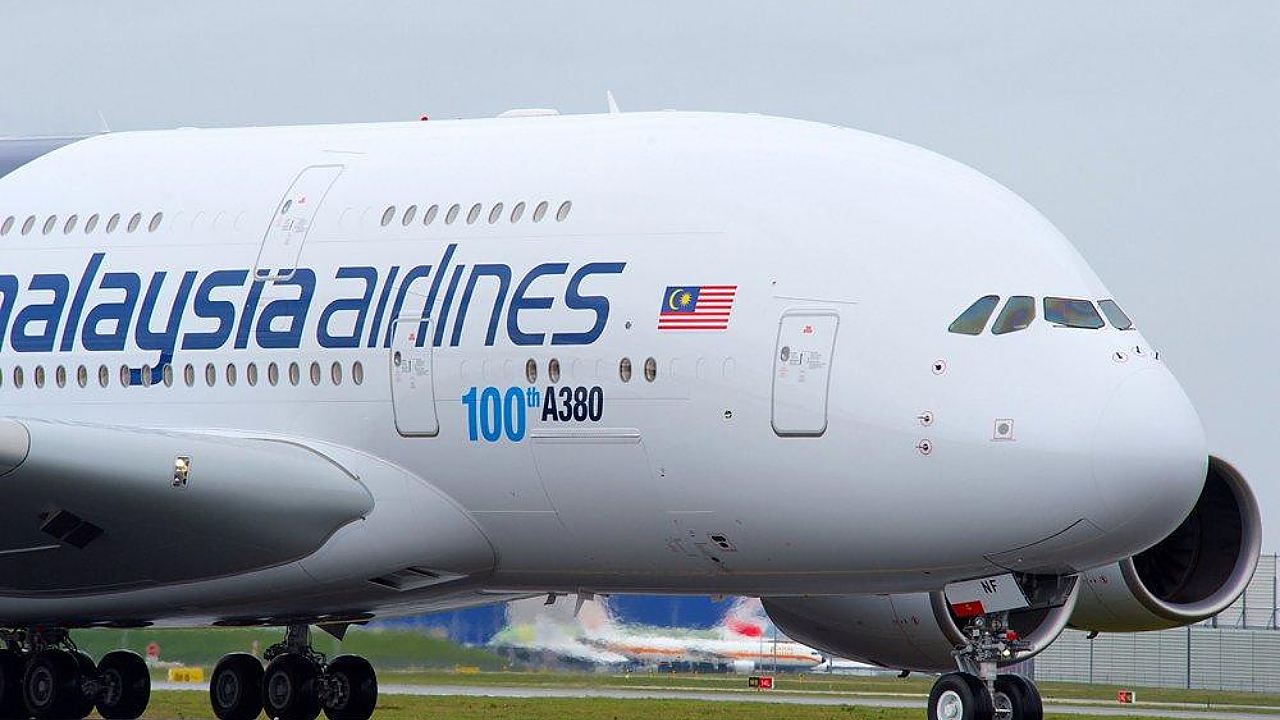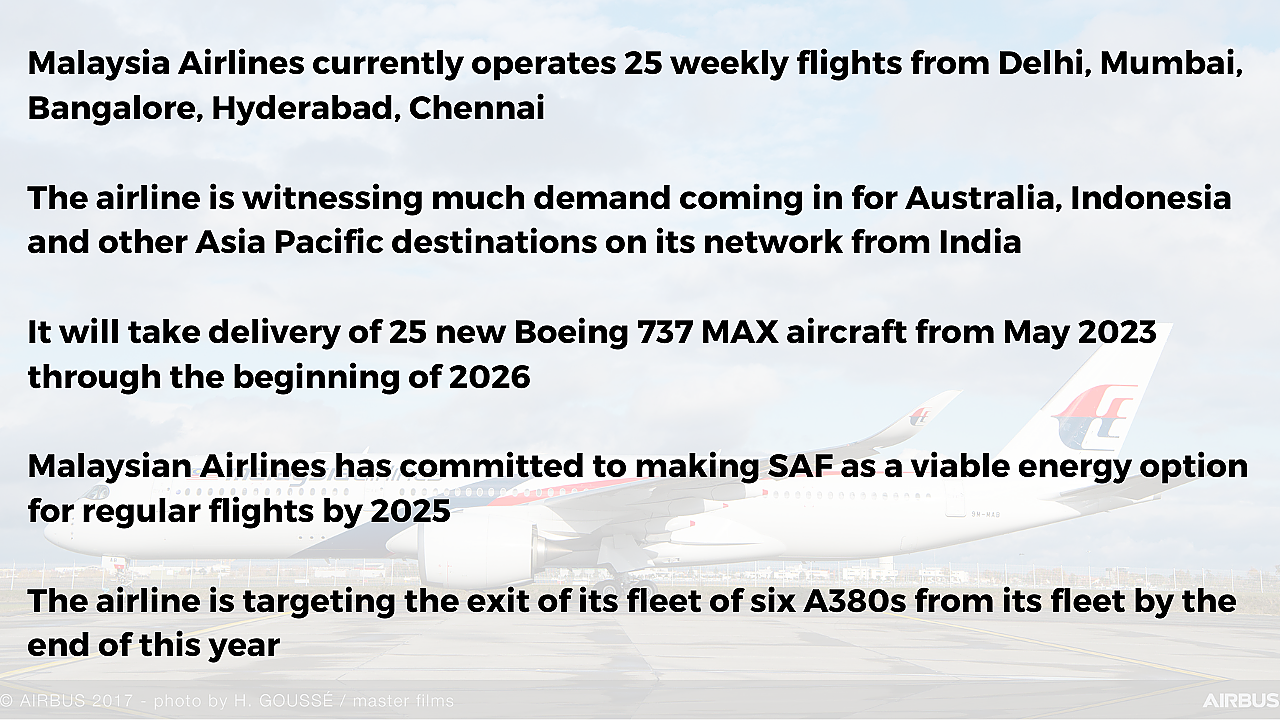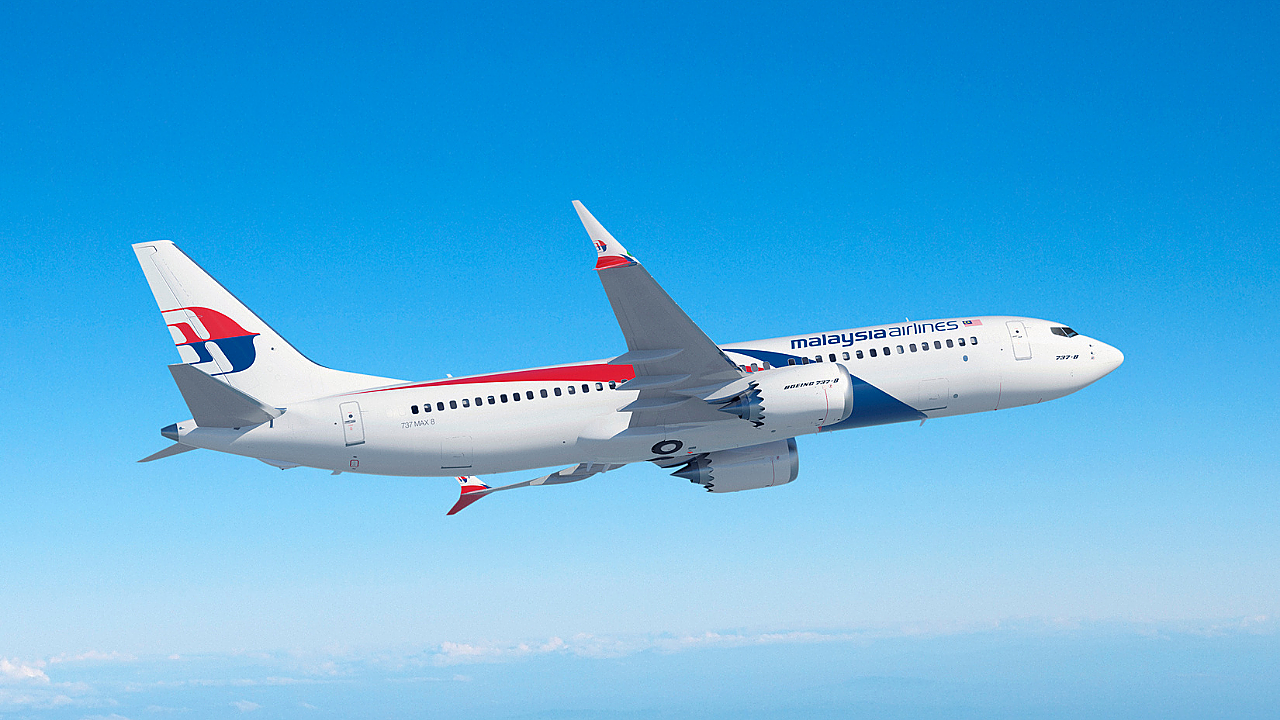
Malaysia Airlines, the national carrier of Malaysia, is eyeing to grow international air travel from India, as it is confident of country becoming one of its top destinations for international travel.
The Kuala Lumpur based flag carrier is part of Malaysia Aviation Group (MAG), which also includes Malaysian regional airlines - Firefly and MASwings and AMAL, which is a Muslim Hajj and Umrah operator. Malaysia Airlines has over 10,000 employees and currently operates 25 weekly flights from India from Delhi, Mumbai, Bangalore, Hyderabad, Chennai. The full-service carrier operates Boeing B737-800, Airbus A330-300 and A330-200 aircraft on these routes.
Market Growth
India has always been a very important market for Malaysia Airlines, with substantial passenger traffic to Malaysia, Australia, and Indonesia - tourism hotspots for Indian travellers. The return of economic activity following two years of pandemic related restrictions being lifted has also given rise to a growing number of business travellers out of India. The airline is closely monitoring the market to expand opportunities based on the passenger demands.
Speaking to Mobility Outlook, Captain Izham Ismail, Group CEO, Malaysia Airlines Berhad, said, “Malaysia Airlines is currently seeing better than expected demand pick-up, leading us to increase frequencies and upgrading to wide-body aircraft on certain flights/routes. India remains one of the key markets for us, especially since we reinstated flights to the country at the end of March, following a two-year closure.”
According to Ismail, the airline is expecting travel from India to closer or short-haul destinations such as Malaysia, Indonesia, Thailand, and Singapore to witness a strong uptick in the next few quarters. Many of these travellers are expected to be first-time international leisure travellers. The airline also sees much demand coming in for Australia, Indonesia and other Asia Pacific destinations from India. “We are continuously reviewing the opportunities in the India market and will add new routes, increase frequencies or upgrade aircraft wherever needed to meet these demands,” Ismail said.

To further encourage travellers from India, the airline has also extended its previously launched ‘Bonus Side Trip’ programme to India, which allows passengers to add an extra leg to their journey and explore cultural gems at minimal costs, as well as extending its ‘MHflypass’ programme to ASEAN destinations.
Like other carriers operating in the region, it is bullish on the speedy recovery of air travel with demand continuing to pick up, as international borders closed for over two years are now open. “Recovery will largely be driven by the leisure and visiting friends and family segments, whilst corporate travel will recover at a much slower pace,” Ismail said.
Fleet Forward
At present, Malaysia Airlines operates a fleet of 76 aircraft, comprising single-aisle Boeing aeroplanes and twin-aisle Airbus aircraft. Its single-aisle fleet includes 43 B737-800 jetliners. The twin-aisle fleet comprises 15 A330-300s, six A330-200s and six A350-900XWs. The airline has stopped operations with its fleet of six A380 superjumbos, which are now in storage and is targeting the exit of all six aircraft by 2022. The A380s were ordered in 2012, and one of the aircraft was the 100th A380 aircraft delivered by Airbus.
The newest aircraft in its fleet are six A350-900XWs on a long-term operating lease from Air Lease Corporation in November 2017. The airline was the first carrier to offer a First Class cabin in the A350-900. The 286-seater aircraft are configured in a three-class cabin layout comprising four in First Class, 35 in Business, and 247 in Economy.
Malaysia Airlines placed its first order of Airbus aircraft in August 1978 with the original A300B4, becoming one of the European manufacturer's earliest customers. Malaysia is Airbus’ third-largest market in the Asia-Pacific region after China and India, with more than 765 aircraft ordered by airlines in the country,
“We are expecting to take delivery of 25 new Boeing 737-8 aircraft from May 2023 through the beginning of 2026,” Ismail confirmed. The 737-8 is the 737 MAX, and MAG will be taking the aircraft on lease. The 737 MAX will use 20% less fuel than Boeing’s first Next-Generation 737s and offer the lowest operating costs in its class. Malaysia Airlines took delivery of its 100th 737 in December 2014, and it has operated nearly every derivative of the 737 airplane family.

Malaysia Airlines currently undertakes all of its MRO requirements in-house through Malaysia Airlines Berhad (MAB) engineering, an internationally recognised MRO facility, carrying out aircraft maintenance and line maintenance services for international carriers in Malaysia.
New Orientation
Malaysia Airlines has also been working hard to meet customer expectations for a touchless experience at airports, both in India and abroad. “We fully realised that the industry needs to rethink how they do business to come out of the crisis,” said Ismail, adding that there was a need to be adaptive, proactive and responsive to cater services and offerings to address changing consumer preferences and ongoing safety concerns while ensuring economic viability for long-term business sustainability. The airline launched the MHFlySafe campaign in January 2022, which reinforced its commitment to putting safety and hygiene as the anchor across all end-to-end consumer touchpoints – from check-in counters, lounges and onboard flights and through to the point of arrival. The carrier has also received a 7-star rating for COVID-19 health and safety measures from Airline Ratings, a testament to its excellence in implementing comprehensive safety protocols.
Sustainability Push
Malaysia Airlines operated its first flight using sustainable aviation fuel (SAF) in December last year. The carrier has committed to making SAF the cleaner and more viable energy option for regular flights by 2025. The December test flight was made in partnership with PETRONAS Dagangan Berhad (PDB) and Neste and witnessed an Airbus 330-200 aircraft making the flight from Amsterdam to Kuala Lumpur using a blended mixture of approximately 38% SAF.
Neste, the world’s leading producer of renewable diesel and SAF, refined from waste and residues supplied Neste MY SAF for the flight, which is produced from sustainably-sourced, 100% renewable waste and residue raw materials such as used cooking oil and animal fat waste. Malaysia Airlines is already exploring the supply and adoption of SAF at KLIA. Moving forward, the airline expects SAF to be a key component of its strategy to deliver a more sustainable travel experience.